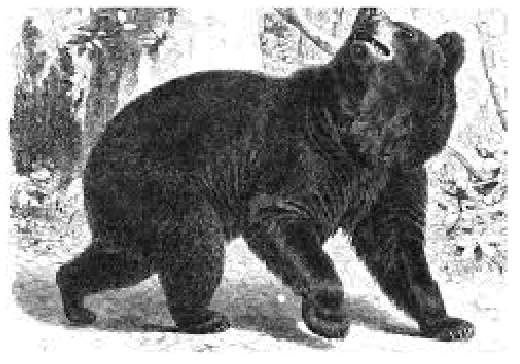The Kansas Department of Wildlife, Parks and Tourism says two black bears were spotted in thestate recently, one in southeast Kansas and the other in the southwest part of the state.
That’s taking social distancing pretty seriously.
We don’t know where they came from — probably Missouri or Oklahoma. We don’t see many black bears in Kansas, or bears of other colors either.
But because at least two have wandered into the state, you may be interested in some fun facts about these delightful animals. For one, black bears are the smallest bears in North America, but they aren’t exactly squirrel-size.
They’re four to seven feet long from nose to tail (don’t try to measure them at home) and weigh up to 400 pounds. And, despite all that bear fat, they can run up to 35 miles an hour and climb trees. So, if you’re in a tree, try not to antagonize any bears—especially if you’ve just opened a can of salmon.
We should envy the bears. As an unknown author wrote, “If you’re a bear, you get to hibernate. You do nothing for six months.”
And, before you hibernate, “you’re supposed to eat yourself stupid.” Who couldn’t deal with that? Besides, you’d be expected to put on a lot of weight and have hairy legs.
As interesting as they are, bears aren’t the only wild animals seen in Kansas. Not long ago, hunters saw an antlered moose in Jewell County. It was the first time since 1989 a real moose had been seen in the state. This bull moose wandered into the state on his way to Oklahoma. The wild life people didn’t say how they knew he was going to Oklahoma. Maybe he was on his way to Coffeyville.
A moose can be downright cranky, but not as dangerous as a mountain lion. A few of these big cats have been seen in Kansas, and the wildlife people say it’s usually a male from an established population in another state. Biologists say that domestic cats and bobcats along with dogs and coyotes are sometimes mistaken for mountain lions. In 2012, hunters in northwest Kansas killed an 80-pound gray wolf that they mistook for a coyote, most of which weigh about 40 pounds. It was the first occurrence of a wolf in Kansas since the early 1900s.
So let’s face it. Kansas is not a big-animal state. It’s more of a bunny-rabbit and opossum place, with a few North American bison, elk and deer thrown in for size. Kansas has four poisonous snakes but none as large as the diamondback rattler our neighbors have to the south.
I guess we’ll just have to be happy with bats, mice, moles, raccoons, chipmunks, skunks, woodrats and voles, which someone is sure to mistake for an Arctic fox.








